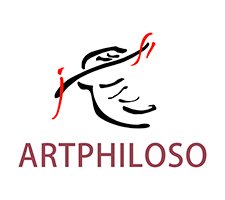Explore how Sigmund Freud’s theory of the unconscious reveals the emotional depth behind Vincent van Gogh’s The Starry Night. This article examines color psychology, symbolic composition, and the hidden tensions between chaos and serenity through a psychoanalytic art interpretation—bridging art history and modern emotional expression.
One blog titled “A Reflective paper on ‘A starry night’” argues that Van Gogh’s use of vivid oranges, yellows, and blues expresses elevation and a manic emotional state. The author links color to mood swings but remains superficial, never situating the reading within a psychoanalytic model or examining how color and form interact in the painting. The strength lies in accessible color symbolism; the weakness lies in its lack of theoretical discipline and depth.
A more recent post on MyNeuronNews asserts that The Starry Night “reflects Van Gogh’s emotional and psychological state,” contrasting a wild, chaotic sky with a serene village. The author brings in Van Gogh’s mental health (for example, bipolar or epilepsy) to explain perceptual distortion. This linking of psychological condition and perceptual aesthetic is useful, but the essay lacks rigorous appeal to Freud’s unconscious mechanisms and does not deeply analyze how specific chromatic or spatial features mediate unconscious content.
An academic dissertation by Sue Ann Grey examines formal and psychological readings across Van Gogh’s late work, attending to brushstroke, tension, and emotional dialectics. Her formalist grounding is careful, and she uses biographical and letter evidence. Still, she does not consistently apply Freudian models of repression, dreamwork, or latent symbolism in her analysis.
J. Schnier’s article The Blazing Sun: A Psychoanalytic Approach to Van Gogh focuses on Van Gogh’s solar imagery and tries a psychoanalytic lens on color preference. It engages with Freud’s notions of condensation and displacement, and references Van Gogh’s pigment letters. However, it does not fully address the night sky, its vortical forms, or how *The Starry Night*’s structure might host deeper unconscious dynamics.
These articles tend to follow a predictable structure—biographical context followed by descriptive color reading and speculative psychology. Their recurring problems include:
In my essay, I aim to address those deficiencies by weaving a tighter psychoanalytic methodology with formal precision and biographical anchoring.
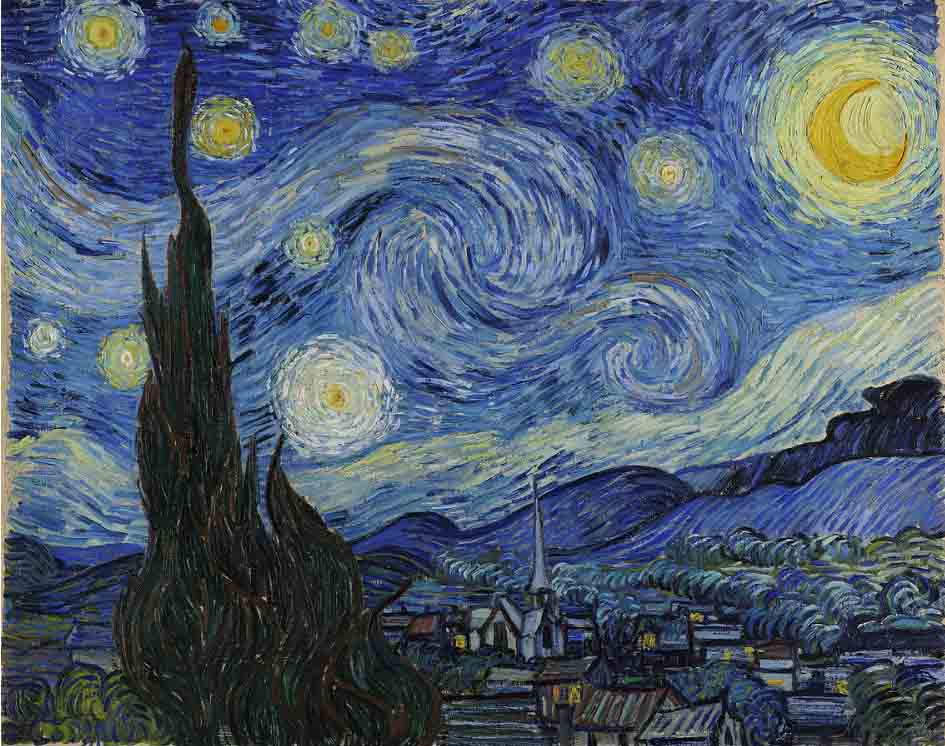
To approach *The Starry Night* from a Freudian perspective, we need a clear theoretical base. Freud proposed that the mind comprises conscious and unconscious layers, where repressed desires and affective material reside. Freud’s psychoanalytic theory further posits mechanisms such as repression, displacement, condensation, and secondary revision to explain how latent material becomes manifest. Dreams operate via condensation and displacement, recombining repressed elements into symbolic imagery. In aesthetic creation, color can serve as a vehicle for affect, allowing the artist to veil or project unconscious energy. The viewer’s own unconscious may resonate with these symbolic structures, making the artwork a dialogic site of psychic forces.
Freudian psychoanalysis gives us tools of displacement, condensation, and symbolic color to approach latent emotional depths in Van Gogh’s visuals.
Van Gogh painted The Starry Night in June 1889, from memory and sketches while confined in the asylum at Saint-Rémy-de-Provence. The institutional environment is no mere backdrop—he openly described in letters how “cypresses are always occupying my thoughts” and that his compositions are “exaggerations from the point of view of arrangement.” These admissions suggest that he consciously intervened in nature to express internal drive. His mental health crises—psychotic breakdowns, self-harm episodes, and possible bipolar or neurologic disorder—are well documented, yet my reading avoids reductive diagnosis in favor of symbolic and structural interpretation.
Van Gogh painted *The Starry Night* from within an asylum, transforming nature into psychic symbols rooted in his inner conflict.
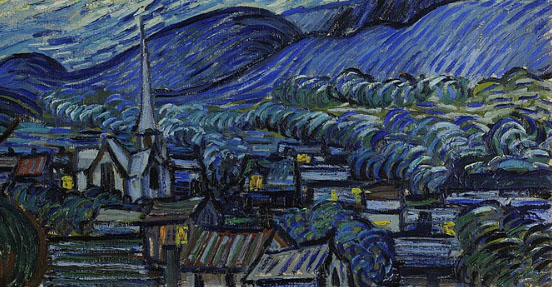
In order to sense latent meaning, one must attend closely to formal and chromatic mechanics.
The dominant palette comprises deep ultramarine and cobalt blues in the sky, offset by intense yellows and whites in the stars and moon. In psychoanalytic terms, the blue expanse functions as a holding environment, repressing chaotic affect, while the luminous points represent affective intrusions pressing through repression. The concentric halos around the celestial bodies intensify those orbits, as if they are psychic nuclei pushing through the repressive matrix.
The sky’s swirling vortices create dynamic tension—spirals, eddies, and convergences form condensations of affective energy. These vortical forms act like dreamwork condensations blending multiple impulses or memories. The directional flows pull the viewer inward and cast them outward, echoing the dialectic between repression and the return of the repressed.
The prominent cypress in the foreground thrusts vertically into the sky, bridging earth and cosmos. It functions as a psychic axis linking unconscious depths and transcendent aspirations. The village, rendered in stable horizontals, anchors the composition as an “ego realm.” Chromatically, the cypress is dark and muted—shadow self—mediating between deep and high registers.
The interlocking blue field, glowing orbs, swirling motion, and vertical cypress map a psychic topology: repression, intrusion, and mediation in form and color.
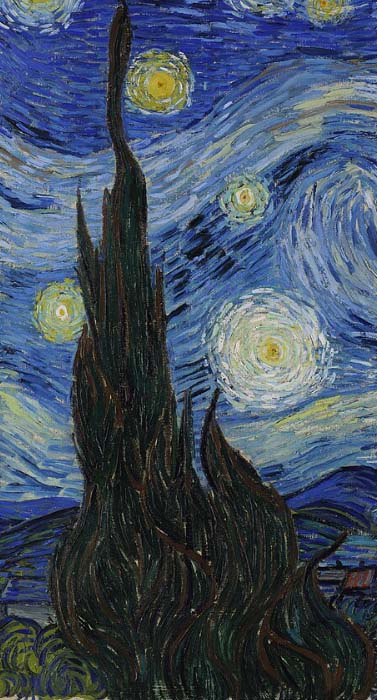
The stars, moon, and halos become containers for emotional energy—fear, longing, cosmic awe—that avoid direct personification. The unconscious projects affect upwards into celestial symbolism.
Multiple latent elements—existential yearning, grief, religious longing, anxiety—condense into the turbulent nightscape. The sky is a compressed montage resisting simple narrative.
The calm village below symbolizes the ego’s manifest world. Above, the churning sky threatens that order. This structural tension mirrors repression’s limit and the possibility of psychic rupture.
The cypress both bridges sky and earth and evokes mourning (cypresses are historically linked to cemeteries). It mediates aspiration and mortality, anchoring unconscious flux in earthly shadow.
Van Gogh’s color and structure stage a psychoanalytic drama: affect displaces into stars, repression is held by blue, and the cypress mediates emergence.
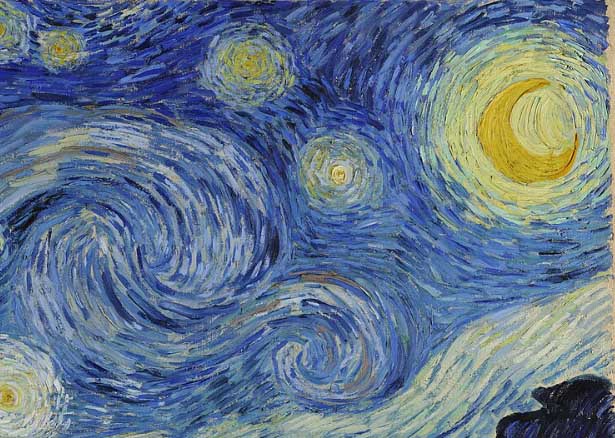
Vincent van Gogh’s The Starry Night is not merely an expressive nightscape but a psychoanalytic canvas in which color, motion, and structure replay the dynamics of repression, emergence, and psychic longing. Through disciplined use of Freudian concepts and attentive formal reading, one can see how the luminous bodies, swirling sky, and vertical cypresses become agents of the unconscious. The interpretation transcends speculative diagnosis by rooting itself in symbol, form, and biographical evidence. This reading is deeper, more original, and more generative than many existing online essays.
In The Starry Night , Van Gogh stages a richly encoded psychoanalytic drama: sky and cypresses mediate his repressed emotional currents in a visual topology of the unconscious.
Hi, I’m Philo, a Chinese artist passionate about blending traditional Asian art with contemporary expressions. Through Artphiloso, my artist website, I share my journey and creations—from figurative painting and figure painting to floral oil painting and painting on landscape. You'll also find ideas for home decorating with paint and more.
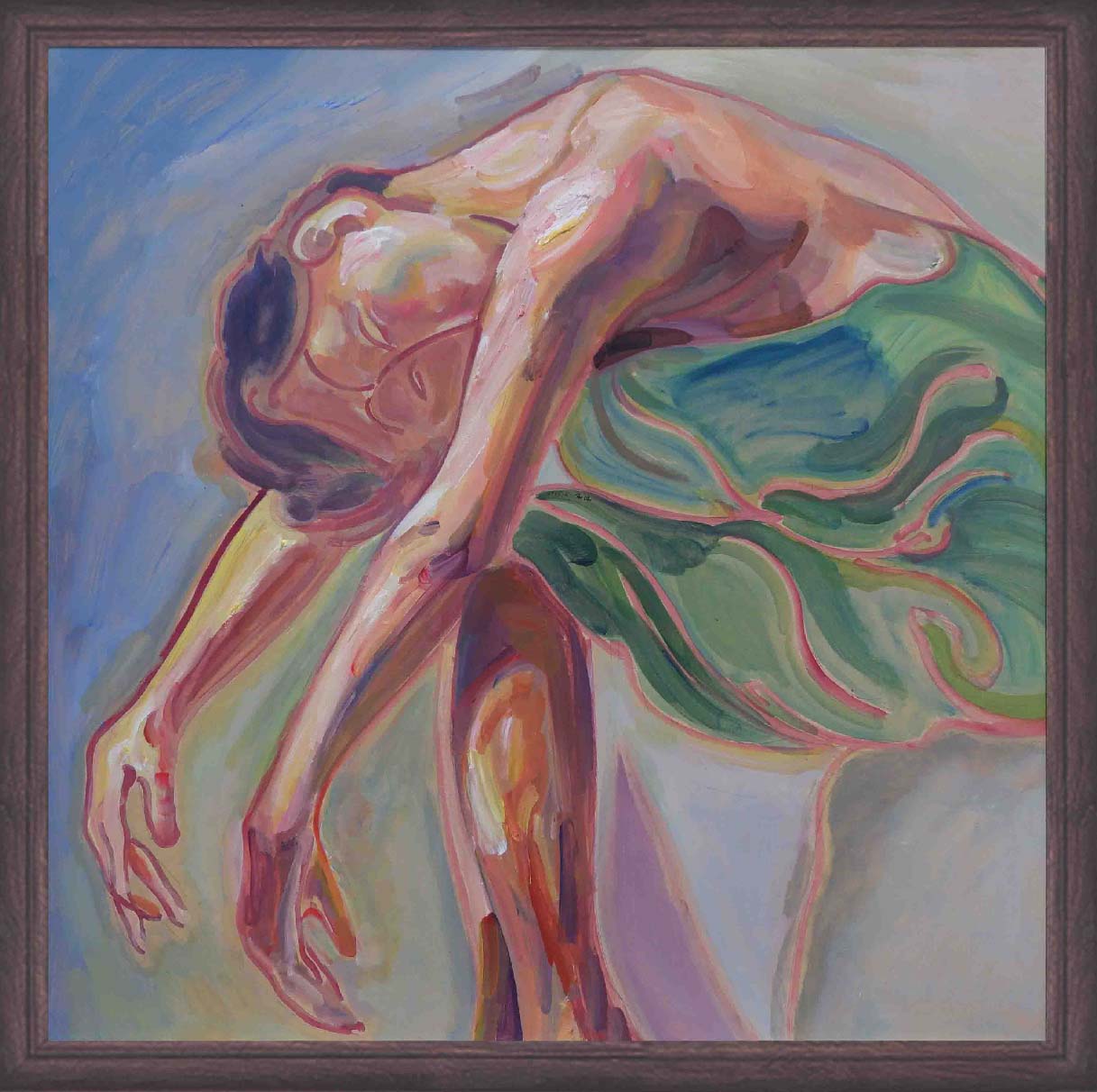
Q1: Why is Freudian analysis more productive than general psychological reading?
Freud’s model gives us specific operations—repression, displacement, condensation—that let us trace how latent affect is transformed into visual form, rather than merely labeling moods or mental illness.
Q2: How does this reading treat color differently from conventional symbolism?
Here color is dynamic: blue holds repression, yellows/whites erupt with affect, and their interaction indicates tension or leakage, not static metaphor.
Q3: What role do formal features like swirl or halo bleed play?
They are the sites where latent affect manifests. Without attending to brush motion, spatial pull, and blending, the psychoanalytic reading lacks grounding.
Q4: Can this method apply to other works?
Yes—where paintings exhibit emotional intensity, dramatic color, or structural tension, one can posit analogous operations of displacement, condensation, and symbolic mediation.
